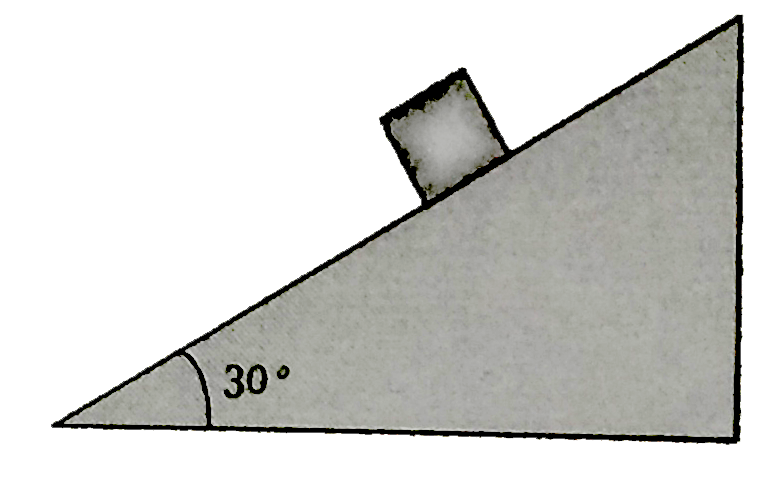The work done in pulling up a block of wood weighing 2 kN for a length of 10 m on a smooth plane inclined at an angle of 15° with the horizontal is
4.36 kJ
5.17 kJ
8.91 kJ
9.82 kJ
The correct Answer is:B
To solve the problem of calculating the work done in pulling up a block of wood weighing 2 kN for a length of 10 m on a smooth inclined plane at an angle of 15° with the horizontal, we can follow these steps:
Step 1: Identify the given values
- Weight of the block (W) = 2 kN = 2000 N (since 1 kN = 1000 N)
- Length of the incline (d) = 10 m
- Angle of inclination (θ) = 15°
Step 2: Calculate the height (h) gained
The height gained (h) can be calculated using the sine function from the right triangle formed by the incline:
h=d⋅sin(θ)
h=10⋅sin(15°)
Using a calculator, we find:
sin(15°)≈0.2588
Thus,
h=10⋅0.2588≈2.588m
Step 3: Calculate the work done (W)
The work done against gravity when lifting the block is equal to the change in gravitational potential energy, which can be calculated using the formula:
W=W⋅h
Substituting the values we have:
W=2000N⋅2.588m
W≈5176J
Step 4: Convert work done to kilojoules
Since 1 kJ = 1000 J, we can convert the work done into kilojoules:
W≈51761000≈5.176kJ
Final Answer
The work done in pulling up the block of wood is approximately 5.176 kJ.
---
- Weight of the block (W) = 2 kN = 2000 N (since 1 kN = 1000 N)
- Length of the incline (d) = 10 m
- Angle of inclination (θ) = 15°
The height gained (h) can be calculated using the sine function from the right triangle formed by the incline:
h=d⋅sin(θ)
h=10⋅sin(15°)
sin(15°)≈0.2588
Thus,
h=10⋅0.2588≈2.588m
The work done against gravity when lifting the block is equal to the change in gravitational potential energy, which can be calculated using the formula:
W=W⋅h
Substituting the values we have:
W=2000N⋅2.588m
W≈5176J
Since 1 kJ = 1000 J, we can convert the work done into kilojoules:
W≈51761000≈5.176kJ
The work done in pulling up the block of wood is approximately 5.176 kJ.
Topper's Solved these Questions
Similar Questions
A block is gently placed at the top of an inclined plane 6.4 m long . Find the time taken by the block to slide down to the bottom of the plane . The plane makes an angle30∘ with the horizontal Coefficient of friction between the block and the plane is 0.2 Take g=10m/s2 .
View SolutionA force of 49 N is just sufficient to pull a block of wood weighing 10 kg on a rough horizontal surface. Calculate the coefficient of friction and angle of friction.
View Solution
Knowledge Check
The work done in pulling up a block of wood weighing 2 kN for a length of 10 m on a smooth plane inclined at an angle of 15° with the horizontal is
A4.36 kJB5.17 kJC8.91 kJD9.82 kJThe work done in pulling up a block of wood weighing 200N for length of 10 m on a smooth plane inclined at an angle of 30∘ with the horizontal is
A18 KJB20 KJC10 KJDNonea particle is projected down on inclined plane with a velocity of 21m/s at an angle of 60∘ with the horizontal its range on the inclined plane inclined at an angle of 30∘ with the horizontal is
A21dmB2.1dmC30dmD6dm
The work done in pulling a body of mass 5 kg along an inclined plane (angle 60∘) with coefficient of friction 0.2 through 2 m, will be -
View SolutionA solid sphere of mass 2 kg and radius R rolls on a smooth horizontal surface at 5ms−1 and then rolls up on a smooth inclined plane of inclination angle 30∘ with horizontal. Calculate the height (in m ) attained by the sphere before it stops.(Take g=10ms−2)
View Solutiona particle is projected down on inclined plane with a velocity of 21m/s at an angle of 60∘ with the horizontal its range on the inclined plane inclined at an angle of 30∘ with the horizontal is
View SolutionThe time taken by a block of wood (initially at rest) to slide down a smooth inclined plane 9.8 m long (angle of inclination is 30∘) is

View SolutionA person pushes a block of mass 4 kg up a frictionless inclined plane 10 m long and that makes an angle of 30∘ with the horizontal . Then the work done is
View Solution
